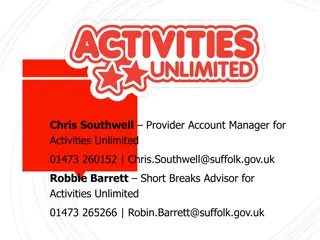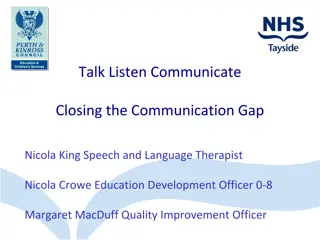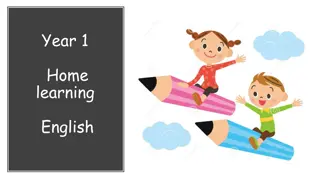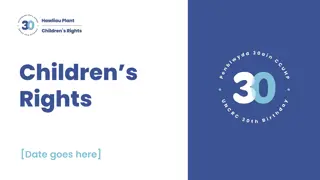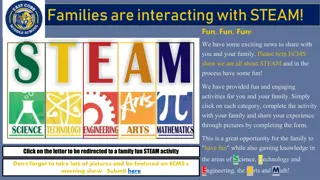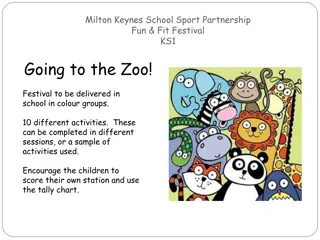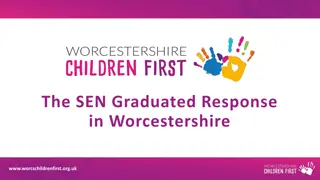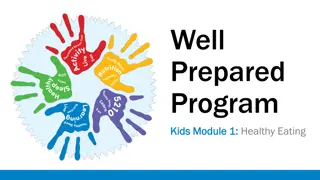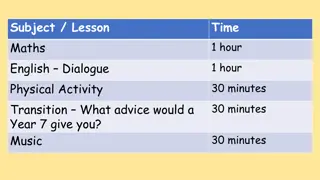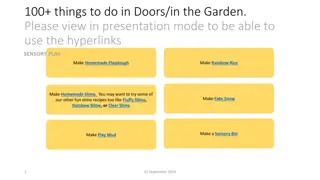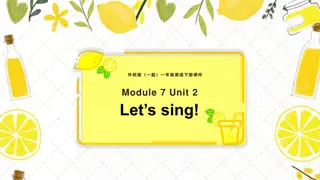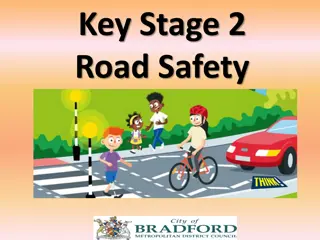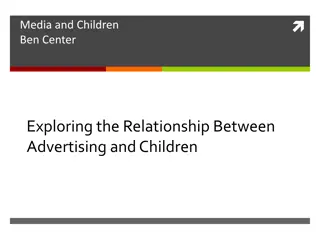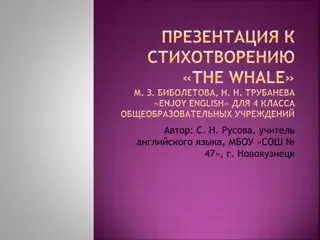Fun and Educational Activities with Boomwhackers for Children
Discover the versatile and engaging world of Boomwhackers, lightweight color-coded plastic tubes that provide endless musical possibilities. From learning about pitch and chords to creating rhythm patterns and composing your own music, these activities are not only fun but also educational for children. Get started with simple exercises and unleash your creativity with these vibrant instruments!
Download Presentation

Please find below an Image/Link to download the presentation.
The content on the website is provided AS IS for your information and personal use only. It may not be sold, licensed, or shared on other websites without obtaining consent from the author. Download presentation by click this link. If you encounter any issues during the download, it is possible that the publisher has removed the file from their server.
E N D
Presentation Transcript
Boomwhackers Boomwhackers must be the most useful instrument available. Musically they are incredibly versatile, they are cheap, indestructible and always popular with the children. I am going to share some very simple activities just to get you started. They include: PITCH identifying change in pitch CHORDS how to make chords RHYTHM creating rhythm patterns COMPOSITION using chords and rhythms to create your own music http://www.educationonfire.com/primary-music
What are Boomwhackers Boomwhackers are lightweight, hollow, colour- coded, plastic tubes, tuned to musical pitch by length. As in all instruments, the longer boomwhackers have a lower pitch than the shorter boomwhackers. Each boomwhacker is labelled with the musical alphabet name (C, D E F G A B C ) and the tonic sol-fa names (Do,-Re-Mi-Fa-So-La-Ti-Do ). Boomwhackers can be played by tapping them on any hard surface, your hands or legs (not too hard!), with mallets or tapping them together. The musical alphabet is made up of 7 letters: A B C D E F G this is then repeated http://www.educationonfire.com/primary-music
We are going to start by listening to the sound of each boomwhacker. Pitch Pitch Pitch Children sit in a circle Distribute the boomwhackers one per child in colour blocks and in alphabet order Children play in sequence to hear the PITCH change from LOW to HIGH Reverse the direction. Play from HIGH to LOW Choose a child to be the conductor. Using arm movements, they then direct the class to play loud or quiet; fast/slow; crescendo/decrescendo; stop/start The conductor can choose which boomwhacker group plays by pointing at them. Try choosing two or three groups at the same time, stopping those you don t want to play http://www.educationonfire.com/primary-music
Composition 1 To compose a piece of music we are going to need some NOTES and RHYTHM. We know we can play individual notes or chords on the boomwhackers, so now we need a rhythm. We are going to get this by using colours and shapes. First choose any colour and then choose any shape. You don t have to stick to the examples given Try playing some of them as rhythm sentences on the boomwhackers Try making up a routine. (There is an example on the next page) http://www.educationonfire.com/primary-music
Step 1 Step 2 C, plays red square yellow circle and stops E plays red square yellow circle and stops G plays red square yellow circle and stops C plays red square yellow circle and stops C, plays red square yellow circle and repeats E joins in Then G joins in Then C joins in C C G G E E C C Step 4 Step 5 Step 3 4 All play red square yellow circle together 4 times Split into 2 groups low All play red square yellow 4 4 C sounds and high sounds. C&E play red square then E&G play yellow circle Repeat the step 4 times C circle together 4 times C E G C E G C G C E Step 6 We need to end the routine. Each boomwhacker plays 1 tap consecutively. Repeat 3 times All play 1 tap together as a final note 3 C C C E G C E G http://www.educationonfire.com/primary-music
Chords Chords Chords When we play 2 or more notes together we produce a CHORD. Depending on which notes we choose to play together decides whether the CHORD sounds good or not. Playing the notes next to each other in the alphabet at the same time doesn t produce a good sound. Eg, C and D or E and F. However if we skip a note and play e.g. C and E or F and A, the sound really improves. In the circle, try playing both ways and find out for yourselves. http://www.educationonfire.com/primary-music
Chords Chords Chords C, D E F G A B C Which boomwhackers will sound good when played together? Why do you think that is? http://www.educationonfire.com/primary-music
Chords Chords Chords C G D F C G E B A G Chord C Chord F Chord Each chord is named after the ROOT note. This is the first note used. So, in the C chord, C is the first note used, we skip D and add E, skip F and add G so our chord is made up of CEG Each chord is named after the ROOT note. This is the first note used. So, in the G chord, G is the first note used, we skip A and add B, we skip G and add A, skip B and add C so our chord is made up of FAC Each chord is named after the ROOT note. This is the first note used. So, in the F chord, F is the first note used, Chords are often played with 3 notes. We call these TRIAD CHORDS skip C and add D http://www.educationonfire.com/primary-music so our chord is made up of GBD
Chords Chords Chords Chords can be split into two groups: MAJOR and MINOR MINOR chords have a MYSTERIOUS or DARK sound MAJOR chords have a HAPPY or BRIGHT sound C G G A C E B E E G D Try switching between MAJOR and MINOR chords. How easy is it to play C Major and then A MINOR Can you see any other chords that are similar B F D C A F A http://www.educationonfire.com/primary-music
Composition 2 Paint colour charts have some amazing words on them. We are going to use them to compose RHYTHM SENTENCES and then play them on boomwhackers. http://www.educationonfire.com/primary-music
Composition 2 I have chosen 3 colour cards: ALPACA MITTENS, SALTY BLUE and OOPSY DAISY. I am using the notes in the D Minor chord D F A As this is a sentence, I will read it from left to right. I m choosing to play the boomwhackers individually. D D F A ALPACA MITTENS SALTY BLUE ALPACA MITTENS OOPSY DAISY http://www.educationonfire.com/primary-music
Composition 2 Try: Choose your own paint colours, clap the rhythm first to make sure they work well together Choose which chord or chords you are going to use Are you working alone, in pairs or a small group? The trick is, to keep the rhythm simple but make the routine a bit more complicated Using a whole chord for each colour chart or Switch between major and minor chords or All play together, then break into solos How can you make it trickier? http://www.educationonfire.com/primary-music
Boomwhacker Composition Grids Layering means playing different rhythms on different boomwhackers at the same time. Everyone has to stick to their With a COMPOSITION GRID you can compose and write a piece of music for others to follow and play. We will also be LAYERING the boomwhacker rhythms. own part to make it work. Each grid is separated into 2 bars of music each containing 4 beats. A well layered piece of music will have: A bass line a lower sound with a solid beat, especially needs to play on beat 1 A middle 1 or 2 boomwhackers that can play on any beat An upper part using a higher boomwhacker, this can play lots of fancy short notes on any of the beats. Decide which boomwhackers you are going to use (3 or 4 work well) then decide on which beat each boomwhacker is going to play. Remember, they will be playing at the same time, so you will need to leave some gaps. How can I compose a well layered piece of music? http://www.educationonfire.com/primary-music
BAR 1 BAR 2 Boomwhacker Beat 1 Beat 2 Beat 3 Beat 4 Beat 1 Beat 2 Beat 3 Beat 4 C SHORT RED B PINK A PURPLE G DARK GREEN F LIGHT GREEN E YELLOW D ORANGE C, LONG RED http://www.educationonfire.com/primary-music
BAR 1 BAR 2 Boomwhacker Beat 1 Beat 2 Beat 3 Beat 4 Beat 1 Beat 2 Beat 3 Beat 4 C SHORT RED B PINK A PURPLE G DARK GREEN F LIGHT GREEN E YELLOW D ORANGE C, LONG RED http://www.educationonfire.com/primary-music
BAR 1 BAR 2 Boomwhacker Beat 1 Beat 2 Beat 3 Beat 4 Beat 1 Beat 2 Beat 3 Beat 4 C SHORT RED B PINK A PURPLE G DARK GREEN F LIGHT GREEN E YELLOW D ORANGE C, LONG RED Printable sheet http://www.educationonfire.com/primary-music
There is plenty to be getting on with here and lots of fun to be had with boomwhackers. Some of the pages can be a bit tricky to understand so be sure to check out the audio file where I have explained in a bit more detail and played the boomwhackers so you can hear how each activity is supposed to sound. Enjoy, Carol http://www.educationonfire.com/primary-music



